Garden DIY: How to use cardboard in the garden
I'm using store-bought soil and cardboard in the garden today. The plan is to build a completely new growing area!
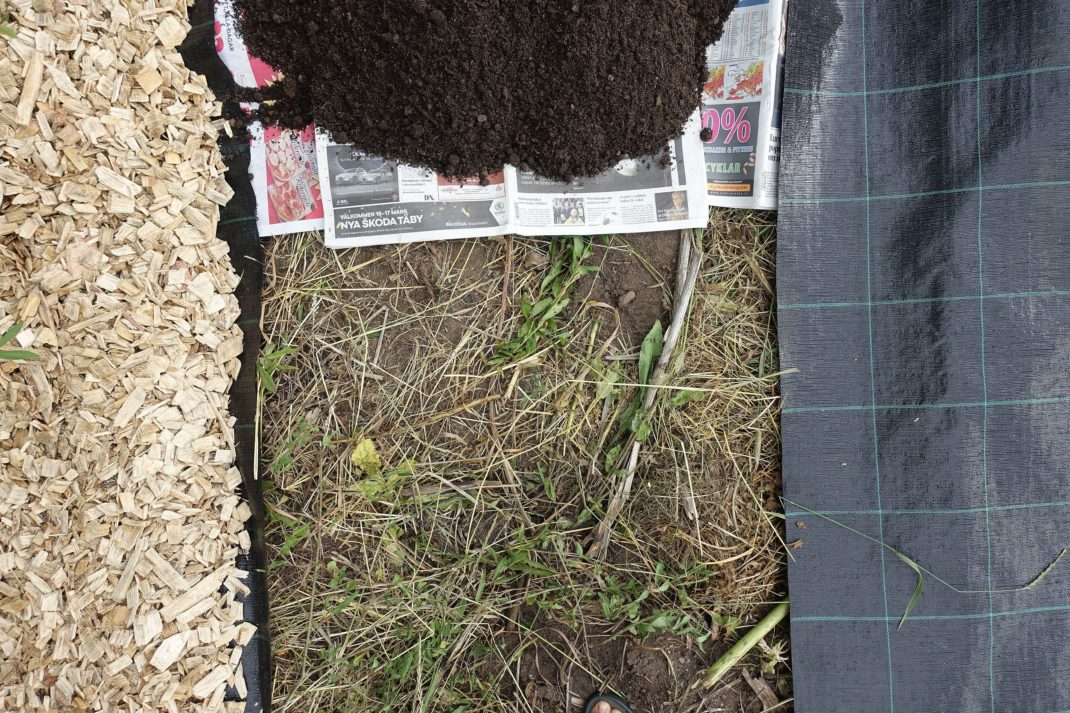
These beds are so easy to make! All with the help of some cardboard in the garden.
This is the second part of my series about the newest area of my garden. I decided to make a few new beds in a neglected area of my yard. You can read more about that here in the first part. I wanted to tell you about how you can use cardboard in the garden to build new beds. So, here it goes!
Read Part 1: My new garden beds
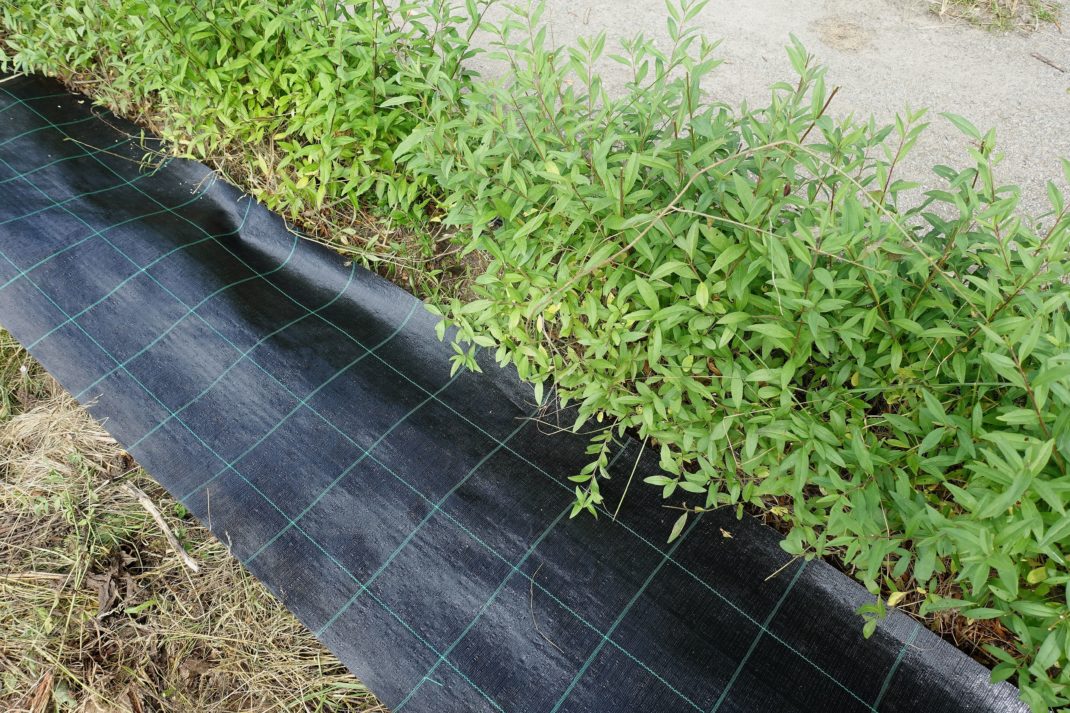
I started by putting landscape fabric on the ground, right next to my privet hedge.
The material
I'm using regular cardboard boxes, landscape fabric, soil, and wood chips. My local shop was generous enough to provide me with the cardboard boxes. So happy about this!
The price of the bought items wasn't too bad either! The soil cost around 20 dollars (199 Swedish crowns or 18 Euros) per tonne, with an additional cost of 25 dollars (250 Swedish crowns, 23 Euros) for the bag itself, and a fee for the transport. Since I live in the countryside, the shipping cost me around 308 dollars (3000 Swedish crowns, 280 Euros.) I was planning to sell the big bags later though.
The wood chips cost 38 dollars (370 Swedish crowns, 34 Euros) per cubic meter, which is around one big bag.
Why soil?
I usually produce my own soil here at home and I don't mind it being a slow process. My composts can take a year or two to start delivering new soil to my garden. But I feel differently about this space. It's driving me absolutely crazy and I want to get to work on it as soon as possible! That's why I decided to buy soil this time.
More about starting new beds: Dig a deep raised garden bed
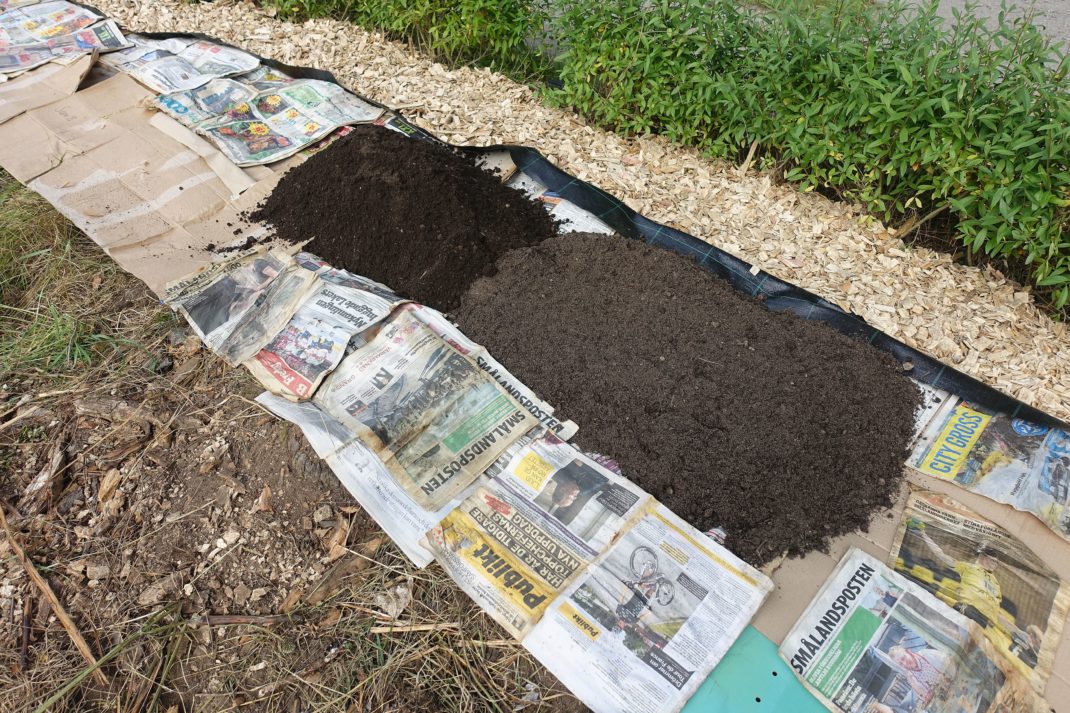
Wood chips on top of the landscape fabric, and then newspapers (non-toxic ink) and soil. I'm building new pathways and beds next to this project.
Cover with cardboard and soil
My method for creating a new bed here is very simple. The ground is in a bad state with plenty of weeds (mostly couch grass), old withered perennials, a tree stump, holes and plenty of molehills. I didn't prepare the ground at all, except for removing the tallest plants.
Method:
- There's a privet hedge right next to the parking lot, I cover the ground beside it with fabric and then I add a layer of wood chips on top to keep it in place.
- After that, I slide cardboard and newspapers underneath the fabric, 8 inches in or so. I also add a thick layer on top, as wide as I want my bed to be at the end + another 2 inches or so.
- Then, I put a layer of soil on top to keep it all in place.
- I add another piece of landscape fabric next to the covered area, overlapping the cardboard. After that, I follow the same procedure as before and put a layer of wood chips on the new fabric to keep it in place.
- I'm adding another layer of soil after that and rake the surface so that the soil covers the cardboard.
- After that, I cover the landscape fabric and cardboard in the pathways with more woodchips.
Does it work?
So, what is the end result? Does it work? The answer is yes, it absolutely does! This method shows that there's absolutely no need to dig in order to create a new bed. The cardboard is compressed by the soil on top and hopefully, the weeds underneath will get smothered. I have used this method for getting rid of couch grass and bishop's weed before, it works really well!
I decided to start sowing as soon as the beds were ready. No need to wait!
Read more: How to get rid of couch grass
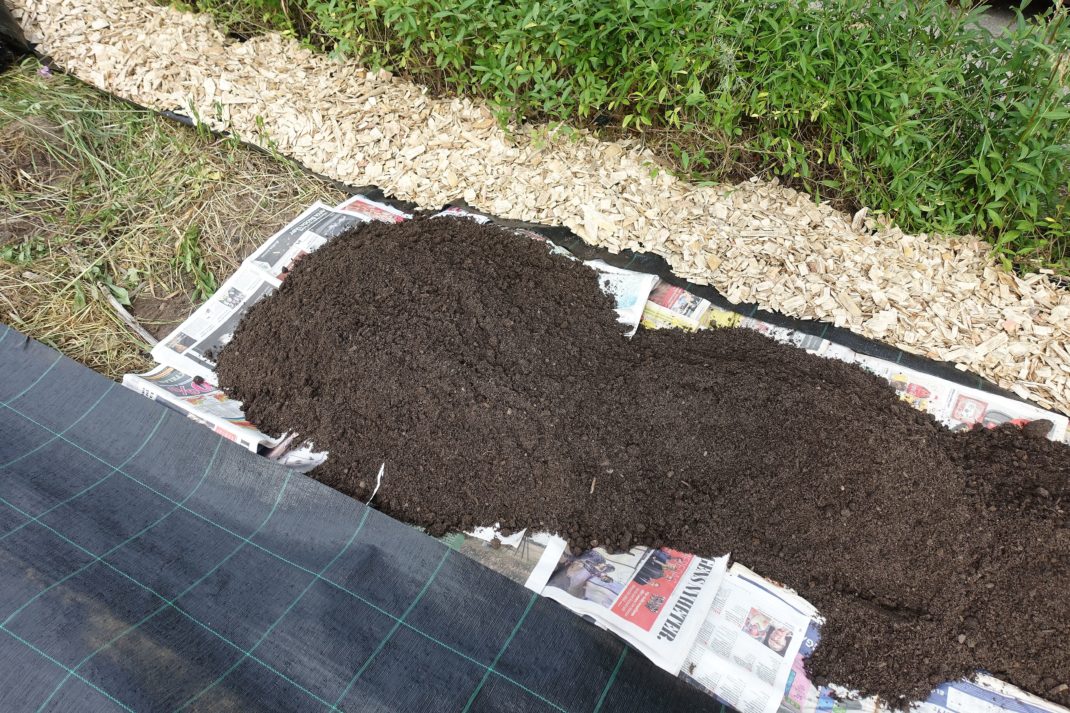
I'm adding new landscape fabric and some wood chips next to the bed.
Tips for using cardboard in the garden
- Don't plant perennials in a cardboard/newspaper bed until you know for a fact that nothing underneath is growing through the cardboard. You might need to cover some parts again if weeds get through, and it's just such a hassle to have perennials growing in this spot if it happens.
- Make sure to keep a stock of wood chips and soil so that you can fill the bed with more material as it compresses.
- You could also build wooden frames that you put on top of the cardboard, and then fill them with soil.
- The soil stays in place if you cover it with grass clippings, silage or something similar. If you want to sow in the bed instead, you can create a little frame made from grass clippings to make sure that the soil doesn't slide down onto pathways.
Questions and answers
A lot of you have questions about this project and want to know more about how to use cardboard in the garden:
What happens to the cardboard?
It will decompose. I never use cardboard with pieces of tape on it though.
How thick is the layer of soil?
4-6 inches (10-15 centimeters.) The layer compresses with time though, so I'm expecting to add more soil later.
How wide are the beds?
2 ft 3 inches - 2 ft 6 inches. I prefer growing in beds that aren't very wide, so it's easy for me to reach from both sides.
How wide are the pathways?
1 ft 7 in (50 centimeters), as wide as the landscape fabric.
Can you sow vegetables with deeper root systems here?
You can, but I'm mainly going for vegetables with shallow roots this fall. The roots can perforate the cardboard quite easily when the material is damp.
What kind of soil do you use?
I bought fertilized soil with plenty of humus.
What about watering?
The reason why I'm making this large cohesive growing space is to make it easier to water later. I'm going to add automatic watering or a drop hose next year. This saves me a huge amount of work. I might even get a solar-powered watering system.
Did you put plastic underneath?
I think it's very important to let the plants reach the soil underneath to gather water and nutrients. This can't happen with a layer of landscape fabric. If you use cardboard in the garden instead, the layer of cardboard will also keep the weeds from growing.
What should I use, landscape fabric or cardboard?
It depends on what you want to achieve of course. I don't recommend building your pathways with newspapers and wood chips only. Been there, done that. It doesn't work. The weeds will start growing in no time as soon as the newspapers decompose. A good rule of thumb is to always use landscape fabric in your pathways, underneath wood chips, straw or similar. Don't use landscape fabric in the beds if you want your plants to be able to root. You will, of course, want your little microbes and earthworms to be able to do their work in the soil too!
No digging?
No, I haven't been digging at all. I just removed the perennials I wanted to keep. Digging is completely unnecessary. It doesn't matter if the ground is uneven, you can't really tell since the soil and the cardboard even it out.
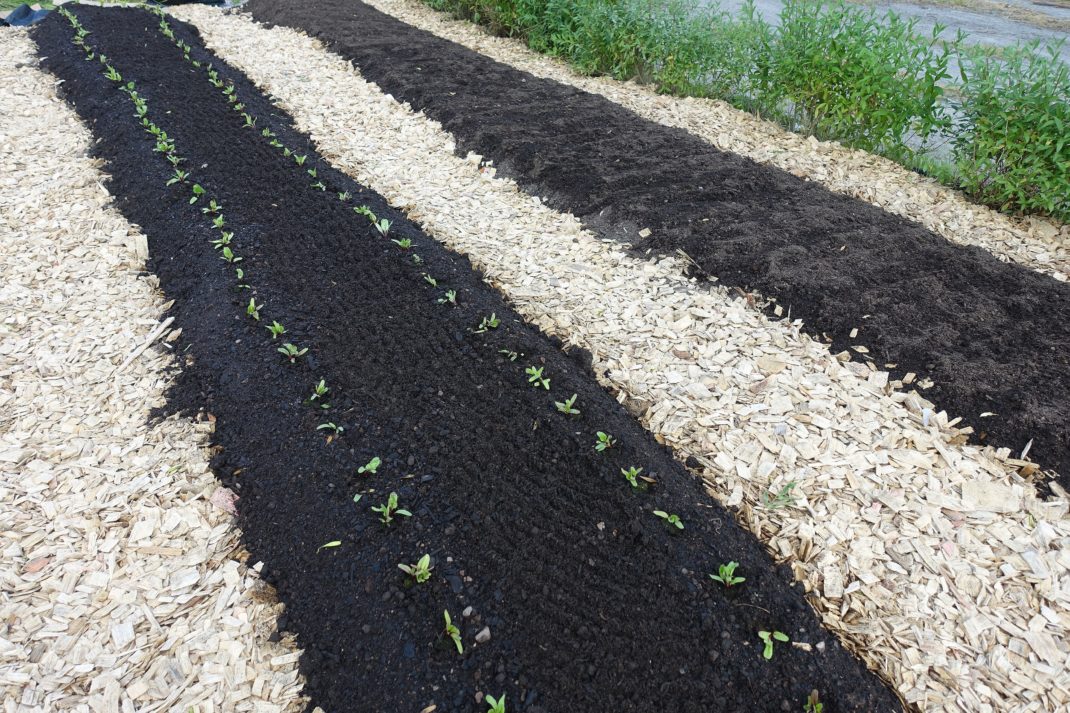
It looks so neat, soil and wood chips alternatively.
There are so many different methods of creating new growing spaces (with or without using cardboard in the garden), and I have written about quite a few of them here on the blog. Feel free to check out the links below:
Creating new garden beds
Creating a raised bed with grass sod
How to make a no-dig bed
I almost can't believe how chaotic this area used to be just a few weeks ago. Plenty of vegetables grow in the thriving bed now. Perfect for a late fall harvest. I still have a few things to fix here and there of course, but this is a great start.
I'm going to tell you more about the vegetables I grow here in the next post. Stay tuned!
/Sara Bäckmo
19. November 2019



Leave a Reply
You must be logged in to post a comment.